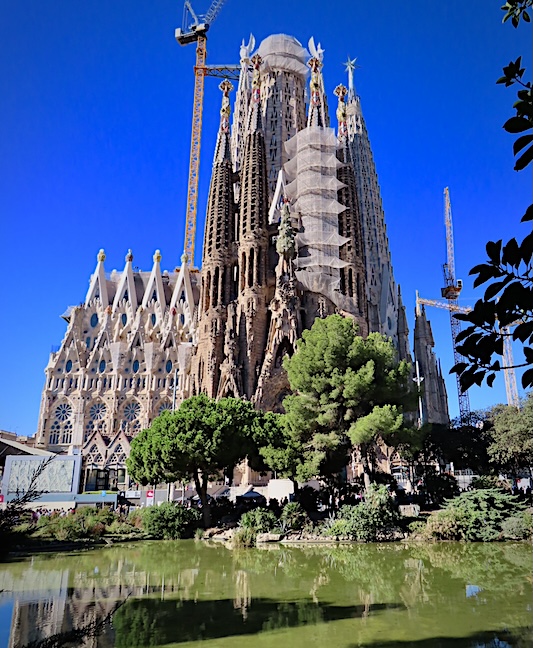When Antoni Gaudí graduated from the Barcelona School of Architecture, the director proclaimed, “I do not know if we have awarded this degree to a madman or to a genius; only time will tell.” Gaudí’s nature-based designs were void of straight lines. He neglected his social life and personal health while devoting his life to Christianity. Gaudí was run over by a tram in 1926 and found unkempt, in old clothes, with no identification.
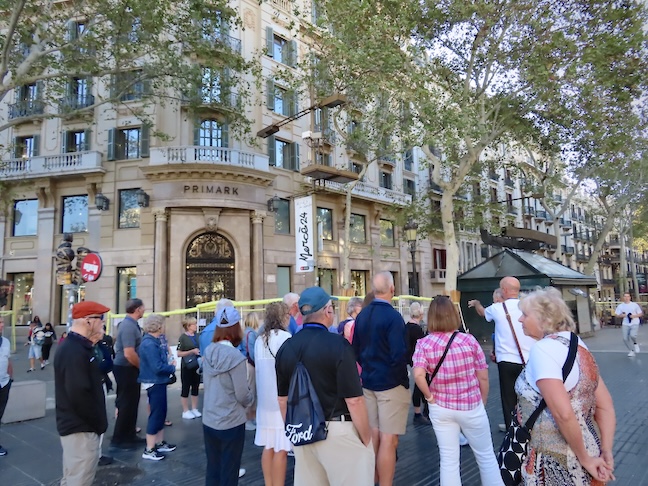
Our day began with a walking tour of Barcelona, where we had a local guide who introduced us to the city’s highlights and Gaudí’s architecture. We started at Plaça de Catalunya and later took the underground train to the Sagrada Familia.
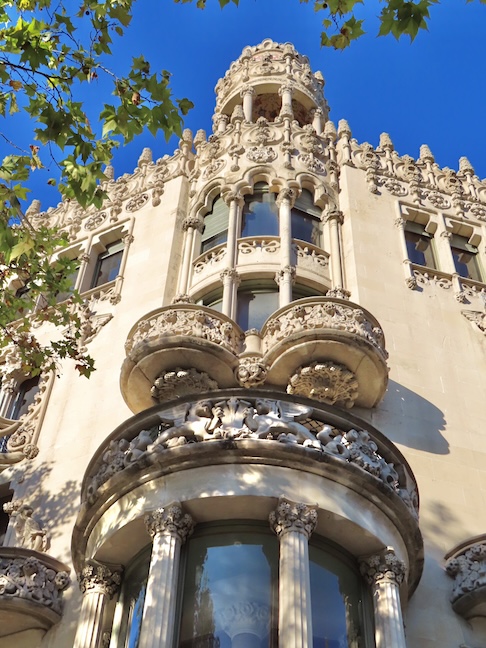
Lavish homes were built by Barcelona’s upper class to impress, with retail space on the ground level and the family’s quarters on the second floor. A huge viewing window was featured on the second floor for residents to show off their finery or expose important people to the lowly masses that gathered outside. Our guide described these large viewing balconies as “The Instagram of that time.” Balconies and windows grew smaller on the upper floors where guests or renters might reside.
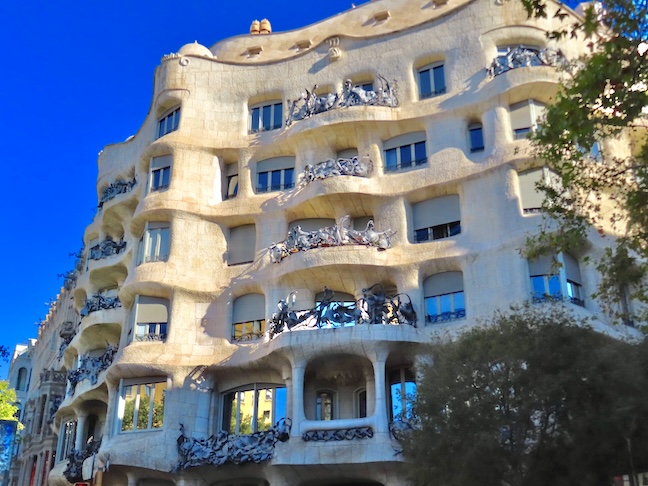
Gaudí’s touch became evident as we observed the master’s work throughout the Eixample area. We learned that the inside walls carried the outside wavy facade’s contours, making it difficult to hang art or decorations with no flat surfaces to mount them on.
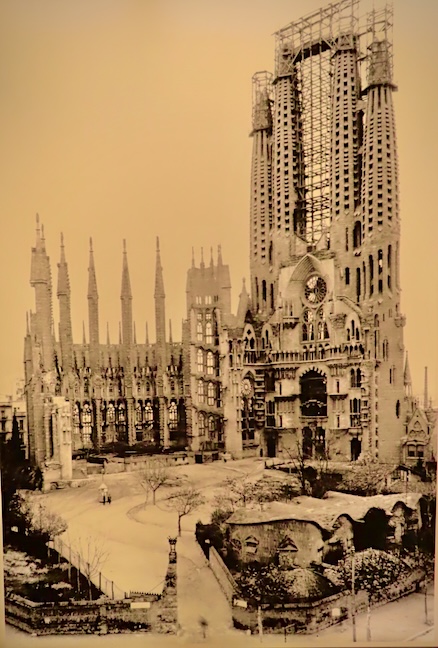
The four rocketlike spires forming the bell tower on the right were the only part of the church Gaudí saw completed before his death. Construction began March 19, 1882, and is ongoing. Most of Gaudí’s original plans were burned by anarchists in 1936. The few plans that survived the fire, published plans, a model, and photographs were all the future builders had to go on.

Nine architects have led the construction of the Sagrada Familia, incorporating Gothic Revival, Art Nouveau, and Modernism styles.
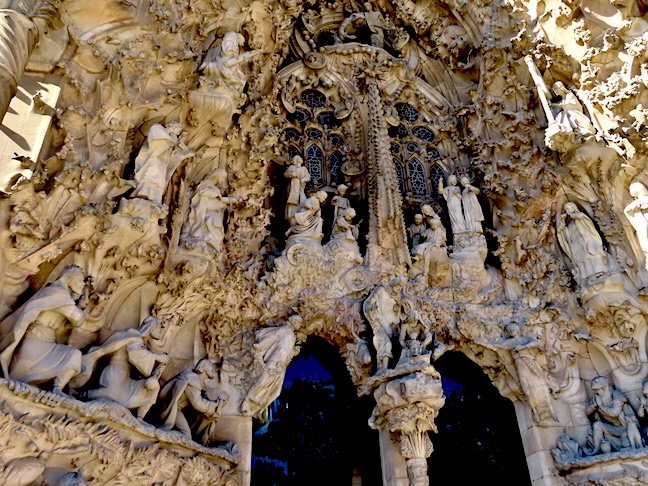
The church’s exterior is a collage of artworks depicting religious icons, saints, foods, revered biblical scenes, and holy events by a parade of architects, sculptors, and metalworkers. When Gaudí was alive, there were 40 sculptors working on the structure.
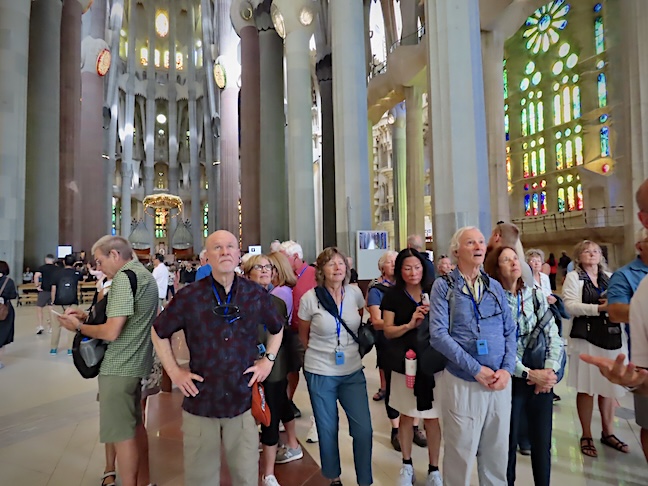
Tickets to enter the church are capped by a set daily capacity. Wait lines for tickets can take two hours. Tickets online are gobbled up quickly and may not be available on your day of choice. Having our tickets supplied by Rick Steves allowed us to enter ahead of the long lines upon arrival. Our local and very knowledgeable guide was also a godsend for explaining the overwhelming visuals inside the church.
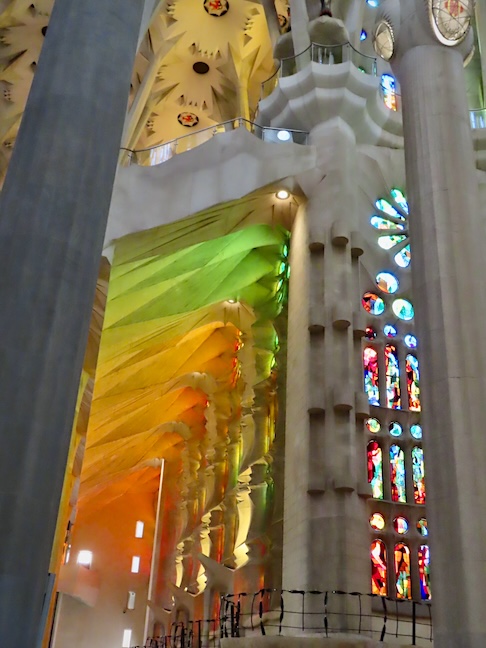
The extravagant interior designs all held meaning and purpose to Gaudí. When the sun was from the east, these stained glass windows were meant to mimic light filtering through the trees in a forest setting.
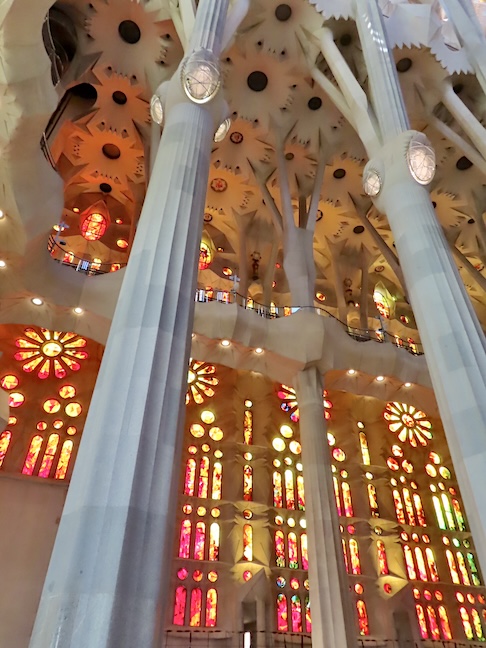
The color and design of the windows on the west side depicted the setting sun’s pageantry.
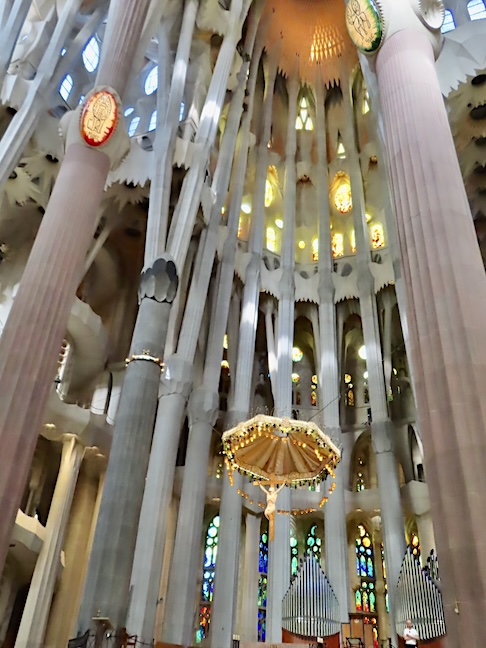
The roof over the main nave was completed, and the organ was installed in 2010, making liturgies possible in the unfinished building.
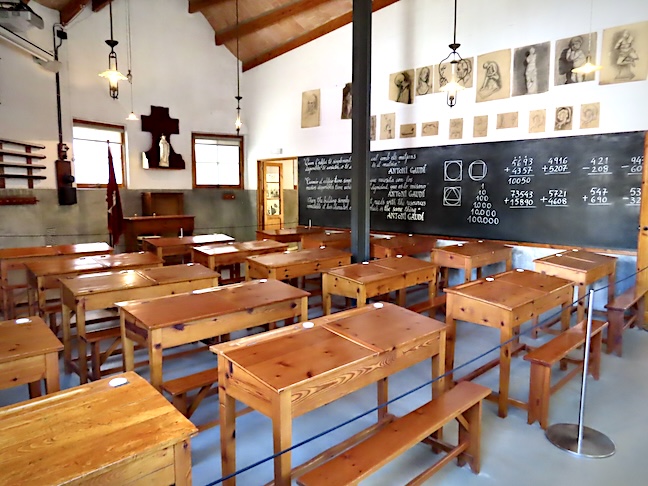
Gaudí knew his ultimate achievement would not be completed in his lifetime. He built a school on the construction site for the children of his army of workers. The children were trained in math, architecture, construction, and engineering so they could continue the work of their parents. Construction of the Sagrada Familia has no government or church support. The beginning stages were funded by private patrons. Money from ticket sales to 3.2 million tourists per year now pays for Spain’s most visited monument.

